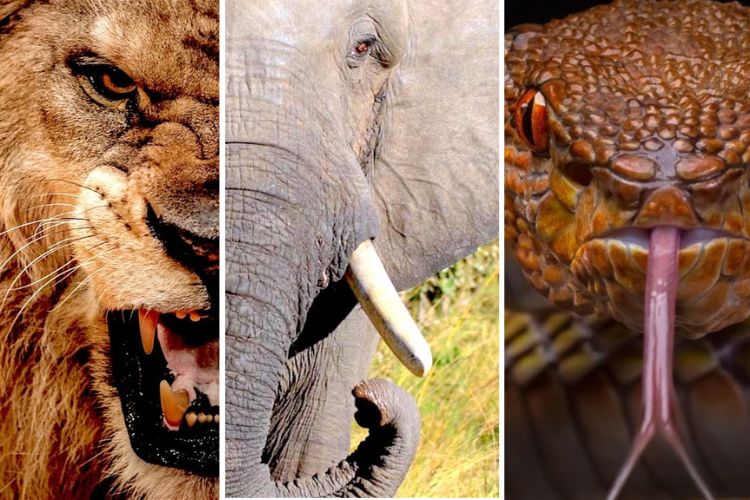Only one animal species sits around and contemplates how to kill humans. Believe it or not, it isn’t a venomous species. Nor is another mammal responsible for as many human deaths as humans. Yet people have this irrational fear and fascination with the most dangerous animals in the world, as if these creatures were hatching their murderous intention and plotting to kill.
The WHO or World Health Organization compiles statistics about how the most dangerous animals affect human deaths. Experts research data about the most venomous marine animals, mosquito bites, or scourges like dengue fever in tropical regions and how to save us from only a handful of animals that kill humans.
Let’s look at the deadliest animals, aside from humans, in the form of insects, reptiles, amphibians, and other animals from the mammal family. But don’t be afraid; information is a powerful preventative tool to ward off the most dangerous animals. Some of the deadliest animals you can kill with just a slap.
Top 10 Most Dreadful Stats
- Mosquito Bites Can Cause Up to 725,000 Deaths per Year
- The Single Bite of Inland Taipan Can Kill 100 Adults
- Dogs Are Responsible for 59,000 Deaths Annually
- Almost 20,000 Deaths per Year Are Caused by Freshwater Snails
- Assassin Bugs Can Kill 10,000 Humans per Year
- The Number of Deaths From Tsetse Fly Bites Is 10,000 annually
- Ascaris Roundworms Are Responsible for 4,500 Deaths Annually
- The Saltwater Crocodile Is Responsible for 1,000 Deaths Annually
- Death Toll Due to Tapeworm Is 700 Annually
- Annually, 500 to 3,000 Deaths Are Caused by Hippopotamus
Most Dangerous Animals in the World
The world is a beautiful place, and it’s full of fascinating creatures. Some belong to the group of most dangerous animals and are even deadly. But few put humans on their agenda to kill as people do with animals.
The Estimated Number of Deaths Caused by Lions Is 200 per Year (Safaris Africana)
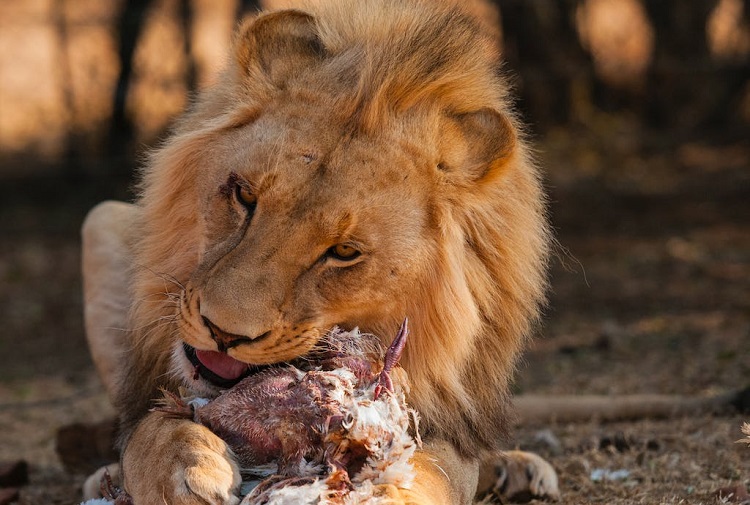
Picture an African Serengeti and hear the roar of a lion in the distance as the sun sets. Tourists flock to Africa with camera lenses poised to capture this magnificent feline in its natural habitat.
Humans are not on a lion’s menu unless we cross their path mistakenly. Male lions suffering from illness are most likely to be the culprit that kills humans.
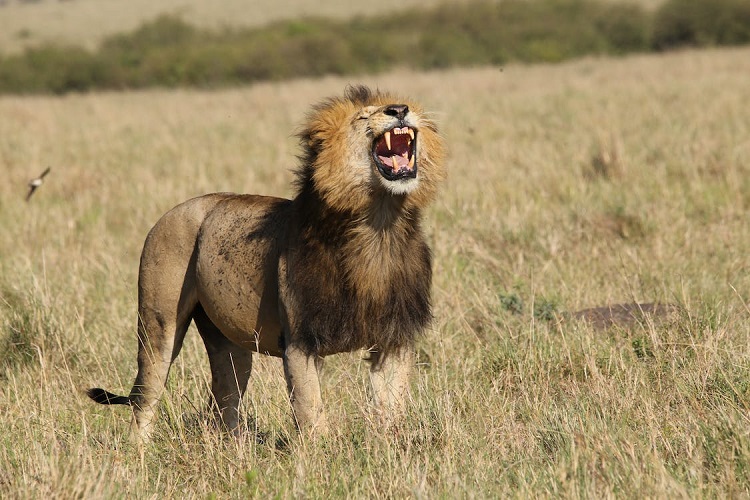
Most often, lions kill locals, about 200 annually, when other prey for this apex predator is diminished. Although news media sensationalizes the death of tourists or guides killed on a safari expedition, those deaths are rare. (source)
Scorpions Kill 3,300 Humans per Year (Science Focus)
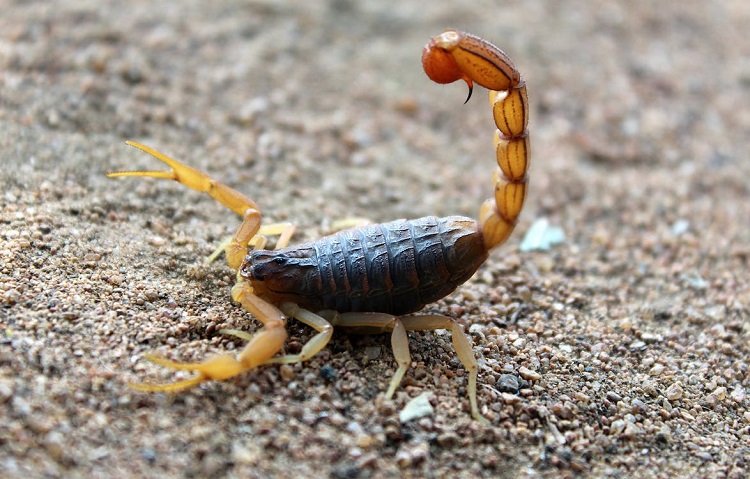
Don’t blame all scorpions for the death of 3,300 people and for making the list of dangerous animals. About 2,500 species of scorpion exist globally, and only 25 in this diverse group deliver a lethal dose of poison capable of killing a human.
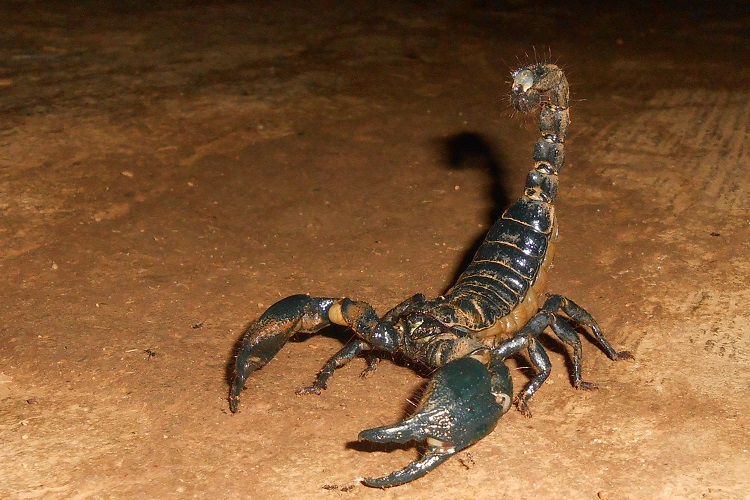
The North American Bark Scorpion from Arizona, Utah, Nevada, and New Mexico is the most venomous.
Albeit there are six nasty stingers more popular worldwide, but any scorpion bite hurts like a (insert swear word). Historically, many people have always mistakenly believed that all scorpions belong to the most dangerous animals.
Medical research has proven that venom from these most dangerous animals is beneficial as a pain reliever and has antibacterial and antifungal properties.
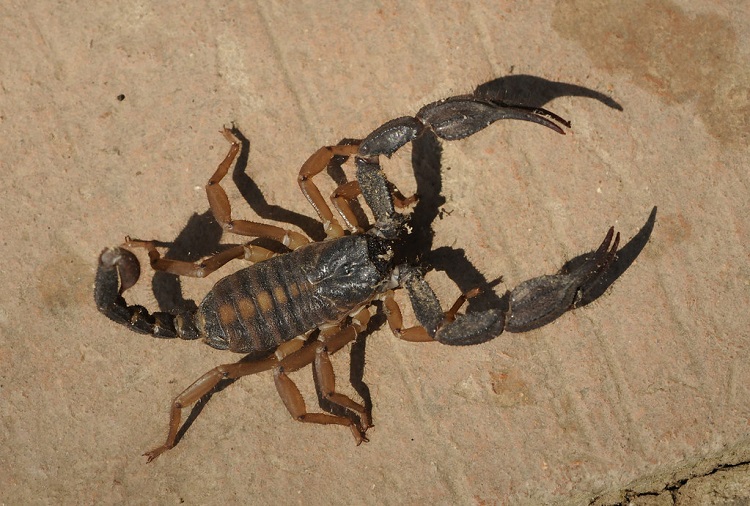
Assassin Bugs Can Kill 10,000 Humans per Year (Science Focus)
Aptly named and also called the kissing bug, the Triatominae bug is responsible for spreading Chagas disease in South and Central America and Mexico. The disease often has a sudden onset and might develop into a chronic condition with fatal heart and digestive complications.
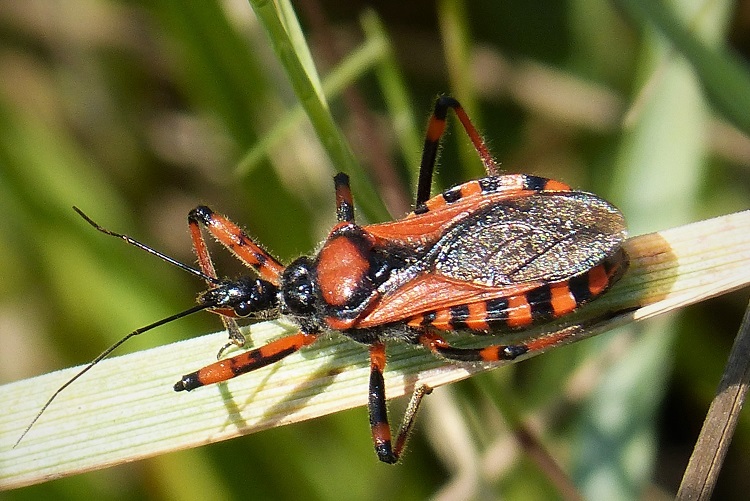
The most dangerous animals don’t always look that way, and many species harm humans as a defense mechanism.
138,000 Deaths Occur Annually Due to Snake Bite (WHO)
About 3,000 snake species slither around our planet, and only about 400 are venomous (not poisonous). Venomous means injecting its prey with venom or toxin, while poisonous means secreting a toxin as a defense mechanism.

There are 25 venomous snakes in North America, and according to the WHO, 2.7 million venomous bites occur yearly. Roughly 81,000 to 138,000 people die. In the USA, one in 37,000 people suffer snake bites, but nearly none die because of anti-venom and state-of-the-art medical intervention.
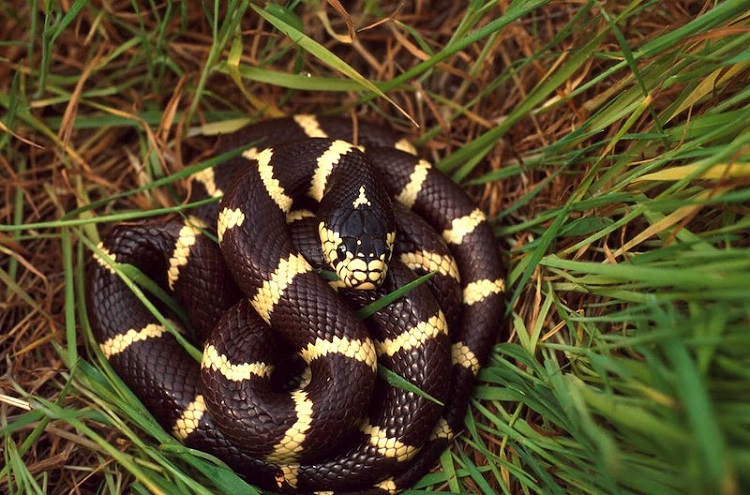
Here is the big twist: snake venom saves thousands of lives every year. The Dusky Pygmy Rattlesnake and Saw-Scaled Viper, which are dangerous animals, produce common anti-coagulants that save thousands of lives yearly. These snake venom medications are beneficial in treating heart attacks.
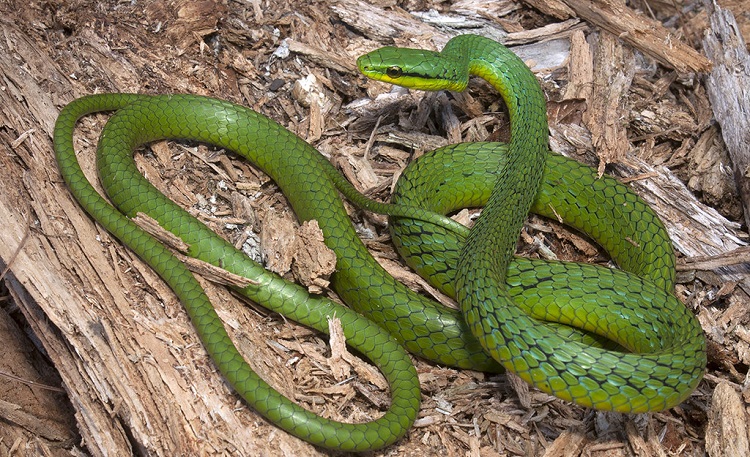
400,000 People Are Killed by Humans Annually (CNTraveler)
In America, there is a saying; Guns don’t kill people, people kill people. Sadly, gun violence is predictable and also very wrong. In 2017, globally, over 464,000 people died at the hands of one of the most lethal animals on Earth–humans.
Yes, there’s a deadlier creature that kills consistently more, but humans are the second most dangerous animal.
- Gun death 238,804
- Knife death 97,183
- Poison & other 104,341
Mosquitoes Are the World’s Deadliest Animals, Killing 725,000 People Annually by Spreading Diseases like Malaria (BBC)
Mosquitos suck! Ever wonder why we need a tiny mosquito? Answer: to feed bats, birds, and fish. Over 3,500 mosquito species exist worldwide, found everywhere except Antarctica. And damn it; mosquitos are prolific pollinators too. It’s only the females that suck on blood.

According to the WHO, there were an estimated 597,000 malaria deaths in 2023, a slight decrease from 600,000 in 2022. Malaria cases also rose to 263 million in 2023, up from 252 million in 2022; there’s the Zika virus, West Nile virus, Yellow Fever, Chikungunya virus, and dengue. Diseases like Yellow Fever and Dengue Fever are successfully prevented with vaccinations.
Protect yourself and your precious human skin from one of the deadliest animals by using mosquito nets and preventative bug spray to prevent succumbing to parasitic disease.
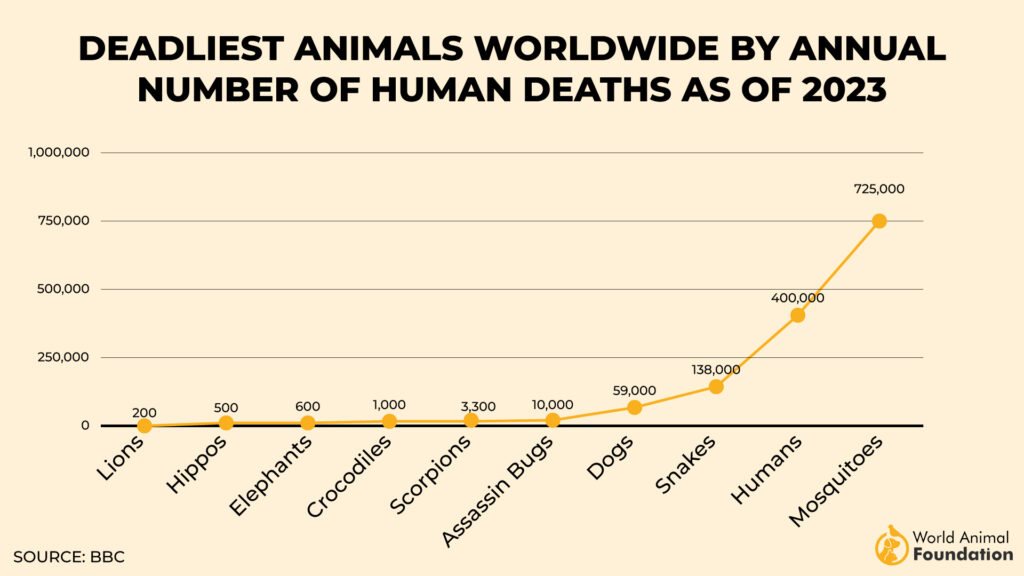
Deadliest Animals in the World
Human beings have two options. One is to stay indoors and hide, and the other is to face this beautiful world despite the dangers of the deadliest animals lurking among us and appreciate life and family.
Annually Box Jellyfish Is Responsible for 100 Deaths (Safaris Africana)

Jellyfish are exotic creatures that are fascinating to watch (on television). Scientists are still discovering new species of Box Jellyfish and identified 51 types. Yearly, about 100 deaths occur, though the number might be higher since not all Box Jellyfish deaths make official reports. (source)
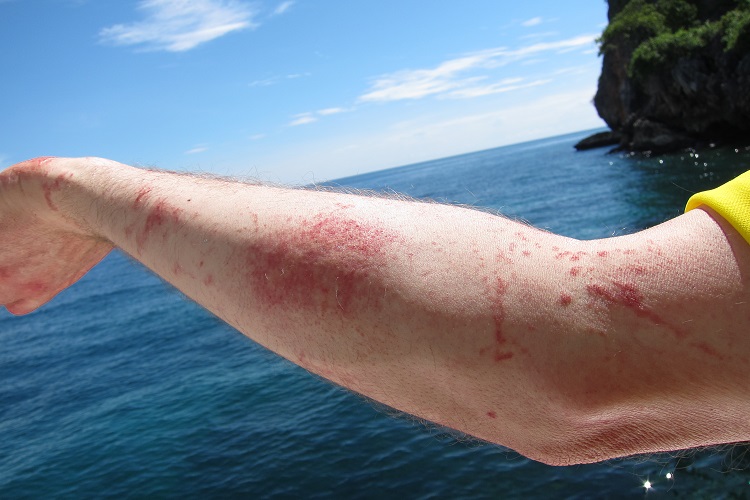
A Box Jellyfish sting is so shockingly painful that a vast majority drown or experience heart failure before reaching shore and never learn they were stung by one of the world’s deadliest animals. Scientists and medical researchers continue to analyze the potent neurotoxins released by 5,000 stinging cells on each tentacle.
These dangerous animals might provide the cure to save millions of lives one day.
Death Toll Due to Tapeworm Is 700 Annually (Safaris Africana)
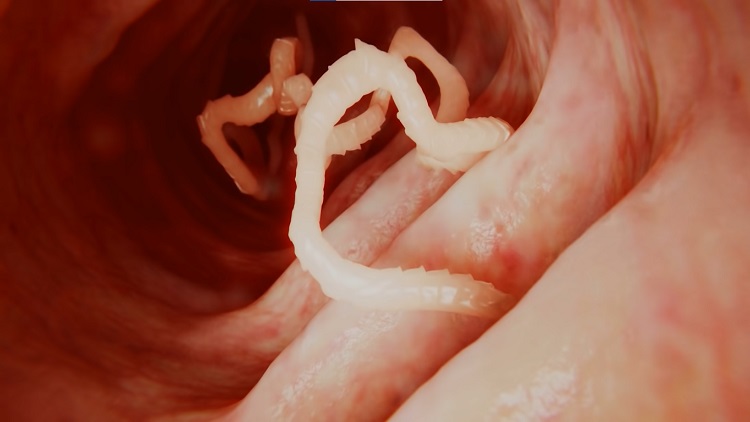
The idea of parasitic flatworms living inside a human body is freakishly gross, and no amount of showering can clear the thought of it. However, this parasite can survive in human intestines and infest other body parts. Larval cyst infections can affect the brain, liver, lungs, heart, and eyes.
These deadly parasites come from eating any raw or undercooked meat. They can grow to astronomical lengths, making them dangerous animals that can easily be eradicated.
The Saltwater Crocodile Is Responsible for 1,000 Deaths Annually (Safaris Africana)
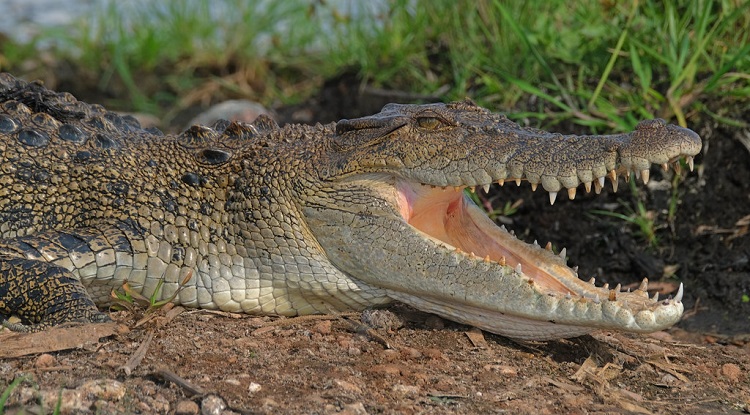
It’s hard not to be in awe of this extremely aggressive reptile that has been part of nature for over 95 million years and is a cousin of prehistoric alligators. These formidable 2,000 lbs and 20 ft creatures have about 60 teeth at a time and over 2,000 teeth during their life. (Hope they have a good dental plan!)
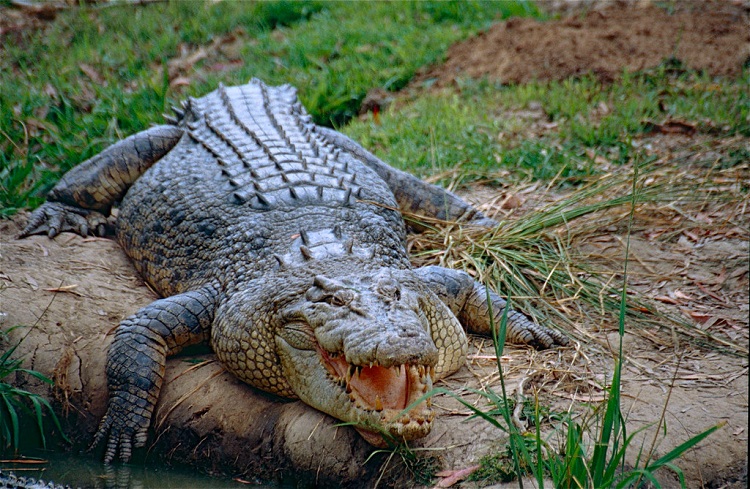
Saltwater crocodile attacks are not uncommon, and these dangerous animals snack on about 1,000 people yearly with a chomping bite PSI of 3,700.
Since humans continue to infringe on their territory, and global warming affects all aspects of plants and animal life, expect the numbers to rise. Or, watch as humans retaliate and destroy the population of the most dangerous animals until they become extinct.
Annually, 500 to 3,000 Deaths Are Caused by Hippopotamus (Safaris Africana)
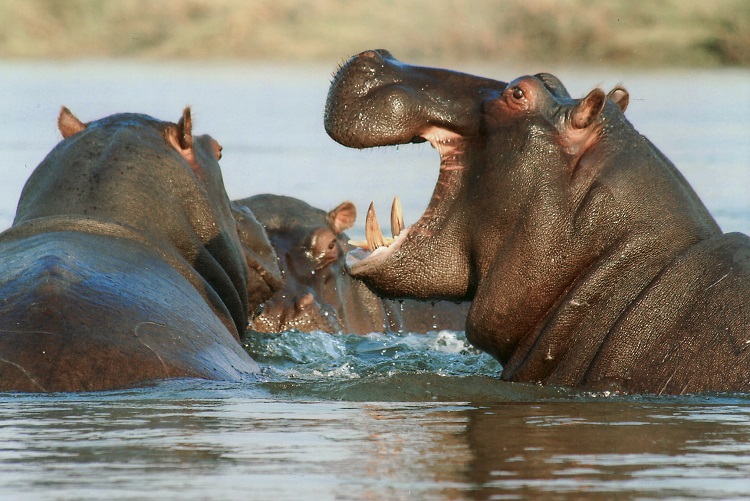
This docile-looking mammal has a surprising reputation in Africa as one of the most dangerous land animals. People are not part of the hippo diet, which is vegetation.
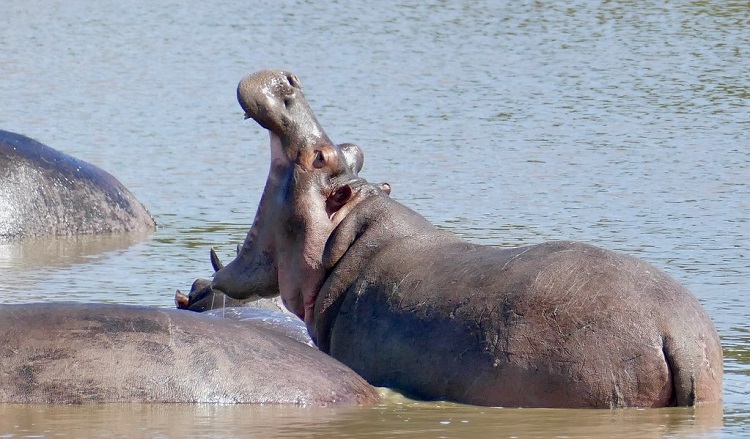
They only attack in the water, where they become fiercely territorial. That means there are still 500 people annually who don’t know that. There are an estimated 115,000 to 130,000 hippos left.
Did you know hippos are on the fringes of extinction? Poachers lie in wait when hippos emerge from their water and kill them for their teeth, making poachers the most dangerous animals.
Ascaris Roundworms Are Responsible for 4,500 Deaths Annually (Safaris Africana)

Can’t say it enough, but wash your hands! Ascaris roundworm is a parasite that lives in the feces of our beloved dogs, cats, foxes, and contaminated soil.
Most people don’t even notice an infection, while others die from roundworm larvae that infect vital organs like the brain, lungs, and eyes. Invisibility makes this one of the most dangerous animals. Wash your hands!
The Number of Deaths From Tsetse Fly Bites Is 10,000 annually (CNTraveler)
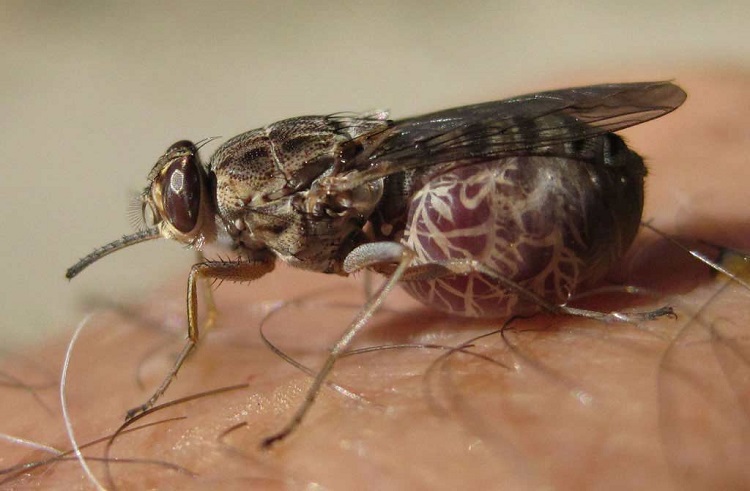
Such a cute name, such a bad Tsetse fly. This ordinary-looking fly from Sub-Saharan Africa has a vicious bite that infects victims with the protozoan parasite Trypanosomes. This pathogen causes African Sleeping Sickness that will mess you up and is fatal if left untreated. (source)
If you visit Africa, it helps to be wearing neutral-colored clothing and avoid bright dark colors. Never wear blue in Tsetse fly territory.
Almost 20,000 Deaths per Year Are Caused by Freshwater Snails (Safaris Africana)
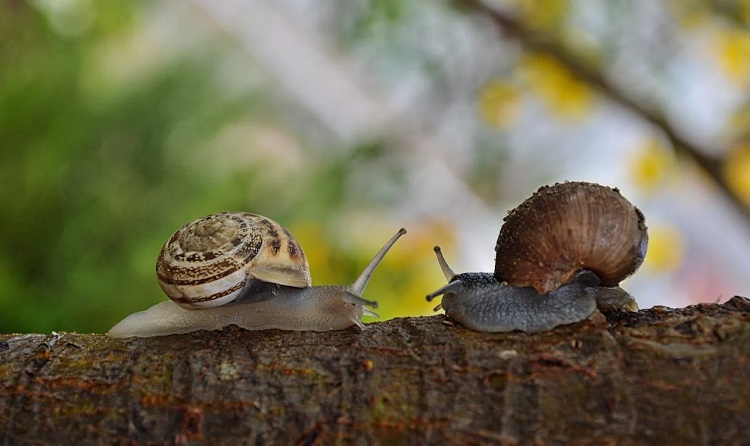
Who knew an innocent-looking freshwater snail could carry a parasitic flatworm that causes fever, bilharzia, or schistosomiasis with debilitation stomach pains? It ranks right behind malaria as the second highest death rate at over 20,000 deaths per year through contact or ingestion.
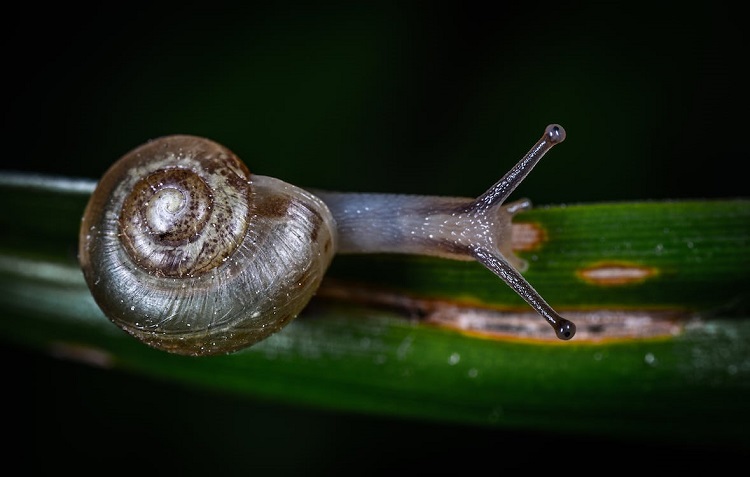
Freshwater snails pose a unique health problem because the symptoms don’t appear instantly. Fever, chills, coughs, and muscle aches mimic flu-like symptoms. Eventually, leading to severe health issues like anemia, malnutrition, and others, making snails one of the inconspicuous but deadliest animals.
Dogs Are Responsible for 59,000 Deaths Annually (Safaris Africana)
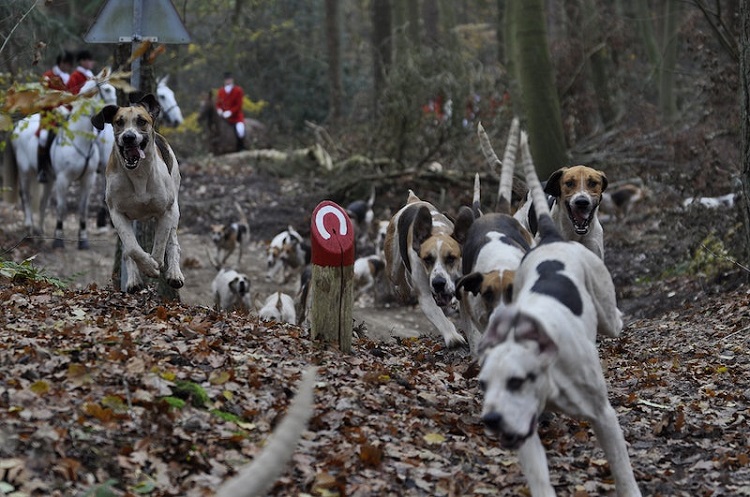
Two sad facts: dog bite and rabies, which is 100% preventable. Rabies is estimated to cause 59,000 human deaths annually across over 150 countries, with 95% of cases occurring in Africa and Asia from the saliva of infected dog attacks. Although we don’t like to admit it, our best friends can become dangerous animals to humans.
Rabies is one of the oldest diseases on Earth and is preventable through vaccination. Rabies is a horrific death sentence for animals and untreated humans.
Other Dangerous Animals
Thank goodness for the internet and people who research these most dangerous animals in the world to inform us. However, many of these animals are also rare and in very isolated habitats, though they can be found in the Middle East, Northern Australia, Sub-Saharan Africa, and your backyard.
Some of these dangerous animals cause muscle paralysis through complex venom, cause organ failure, abdominal pain, encephalitis (serious brain swelling), or fill us with parasites.
Cone Snail Can Kill You Within Minutes (Farandwide)
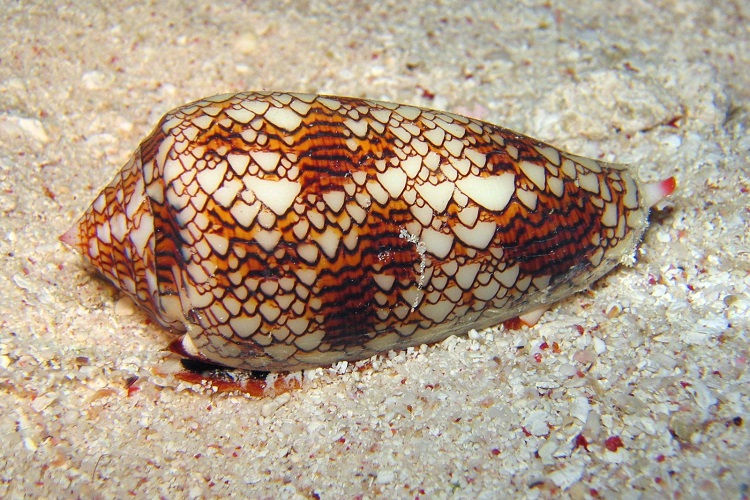
Next time you stroll on a beach collecting seashells by the seashore, be cautious of the cone snail also called the cigarette snail. Found on the shores of Hawaii, the Caribbean Islands, and Indonesia, this distinctly patterned (looks like painted teeth) 4-6 inch shell is toxic and attacks the nervous system.
There is no anti-venom or cure once the snail sinks its radula tooth into the victim and releases a deadly neurotoxin. This snail is right up there as the most venomous marine animal in the world. (source)
The 2 Microgram Poison of Golden Dart Frog Can Kill 10 Adults (CNTraveler)
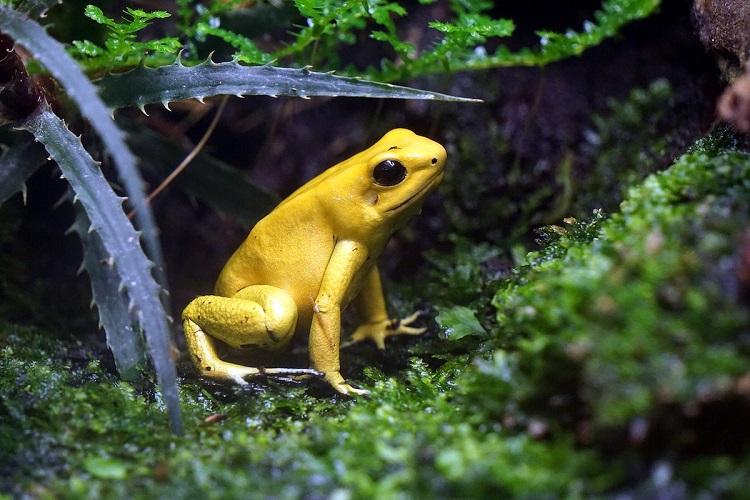
Tiny but mighty. This amphibian native to Colombia is only about the size of a paper clip. How the indigenous emberá people harvested the frog’s toxins must have been a bit by trial and error since the poison is so toxic it can kill ten adults.
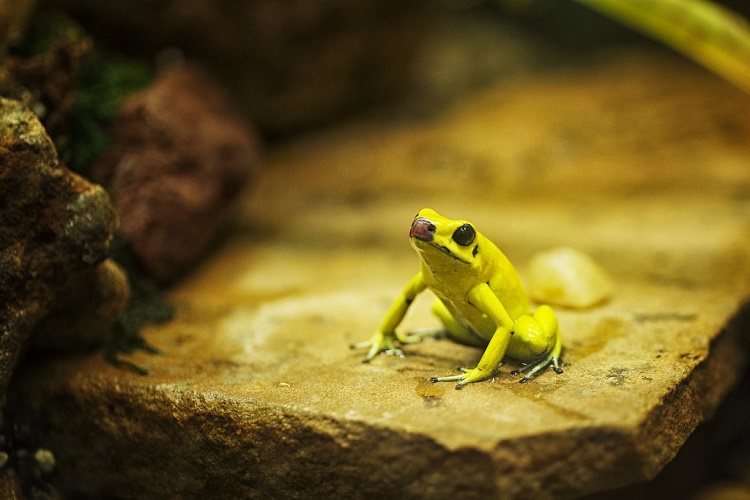
These brightly colored frogs are vanishing from our planet due to deforestation effects and are on the endangered list, and are one of the deadliest animals in the tropical rainforest.
The Tetrodotoxin From Pufferfish Is 1,200 Times More Poisonous Than Cyanide (Safaris Africana)
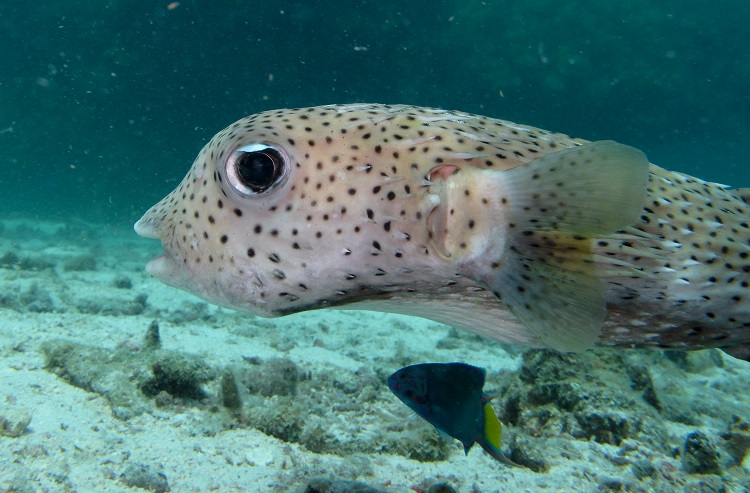
Yet Blowfish or Pufferfish is on the menu as a decadent ingredient for soup or sashimi in Japan. Pufferfish are the second most poisonous vertebrate (right after the #1, the Golden Frog); their neurotoxin is on their skin, muscles, organs, and private parts.
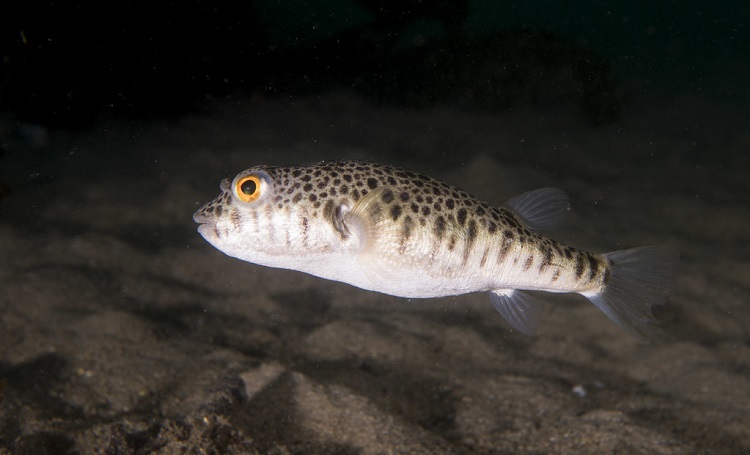
Known as fugu in Japan, if incorrectly prepared, eating this dangerous animal can lead to paralysis and even death. Yum!
Brazilian Wandering Spider Bite Can Cause Human Death Within 2-6 Hours (Safaris Africana)
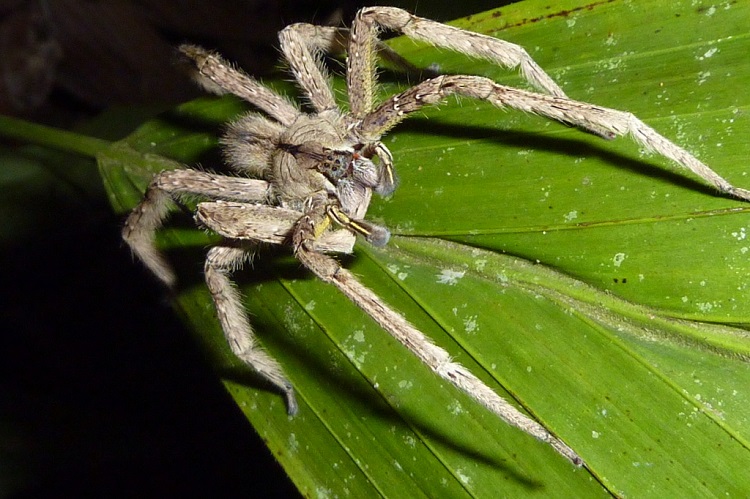
Endemic to South and Central America, the Brazilian Wandering Spider is big enough to leash and take for a walk. At 5 – 7 inches, this critter likes to hang out where people live.
That’s why one should always shake out one’s shoes to check for arachnids who want to surprise us. Death from this spider bite isn’t pleasant, and people can die within a few hours.
Another of the most dangerous animals is the funnel web spider. The Atrax robustus is a venomous spider native to eastern Australia.
Stonefish Venom Can Cause Death Within an Hour (Safaris Africana)
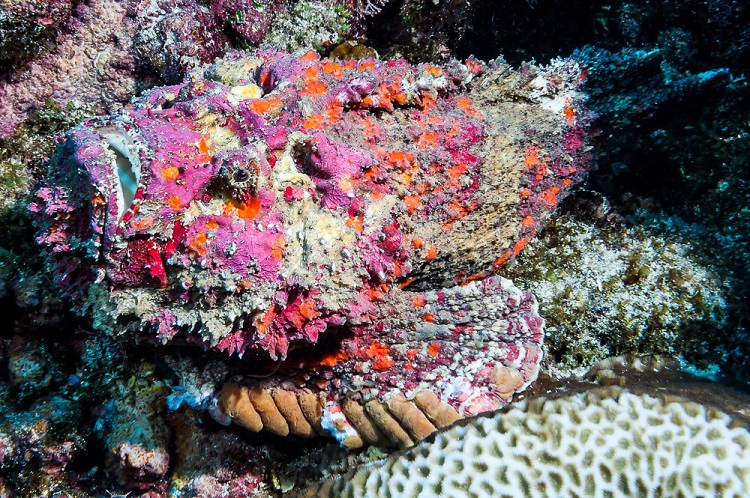
This most venomous fish isn’t hard to miss if someone points it out. It is, however, a master at camouflaging against its marine environment at low tide. The pain from the pinprick spines is laced with toxic venom, causes unbearable discomfort, and can be fatal.
Once endemic to the Indian and Pacific Oceans, they migrated to Florida and the Caribbean and took residence.
The Toxin Released by Blue Ringed Octopus Is 1,000 Times More Poisonous than Cyanide (Safaris Africana)
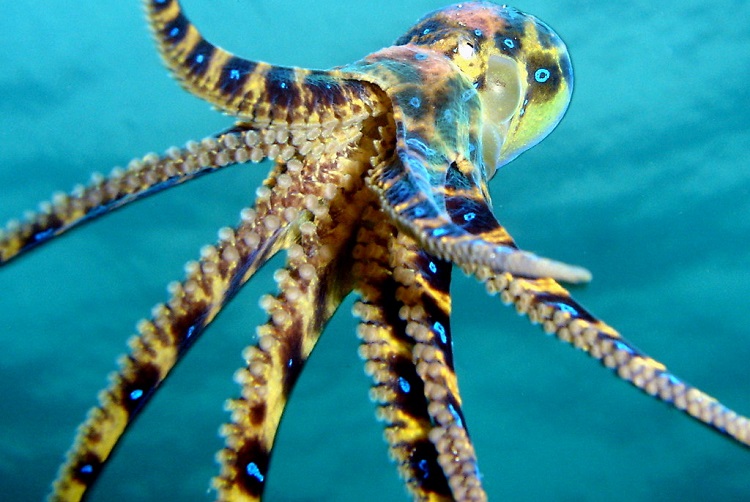
This vibrant creature has a painless bite. That is until the neurotoxin kicks in with a potent 1,000 dose of cyanide. And there is no antidote, so say your prayers. This blue-ringed beauty is so tiny that it fits into the palm of your hand. But don’t, don’t touch these dangerous animals.
The Blue Ringed Octopus inhabits the Pacific Ocean around Australia and Japan. It’s a venomous marine animal of unparalleled proportions.
Ferocious Animals
Saw-Scaled Vipers Are Quite Aggressive With More Than Double a Lethal Dose Into Each Bite (Farandwide)
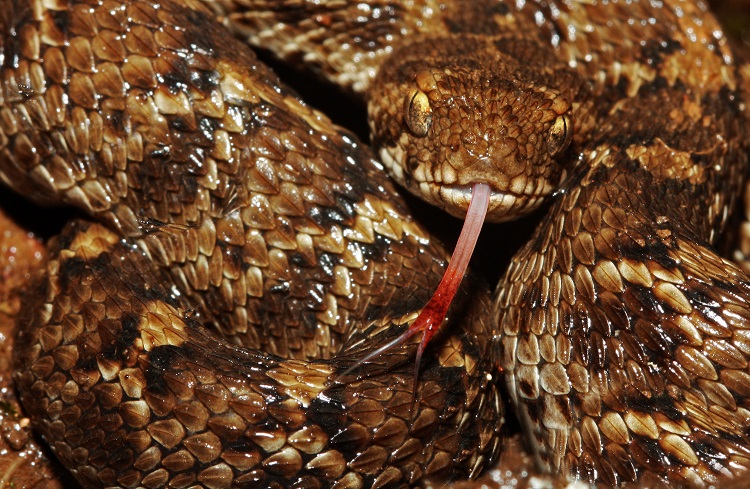
The little Indian saw-scaled viper thrives in densely populated areas of India and beyond its borders. Like most snakes, they remain unnoticeable because of their earthy skin tones and scale pattern. These reptiles are night predators and very aggressive, though they send off a defensive sound as a warning.
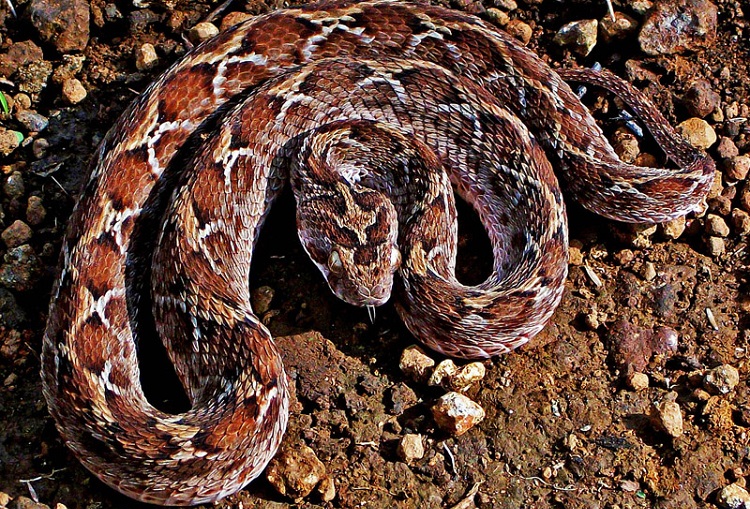
A Saw-Scaled Viper bite packs a punch, and it’s best to get that anti-venom quickly, or you’ll die from one of the world’s deadliest animals living in India.
The Single Bite of Inland Taipan Can Kill 100 Adults (Farandwide)
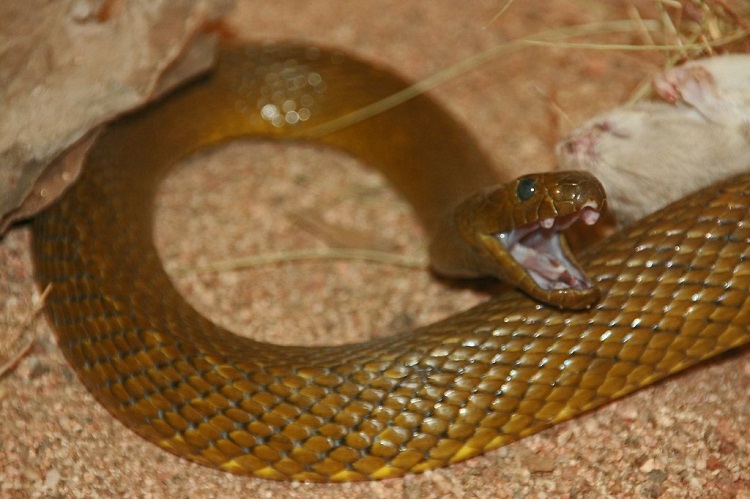
Native to eastern Australia, the Indian Taipan is a powerhouse of toxicity and produces a lethal cocktail that can take down a hundred adults. This snake is the most venomous and continuously ranks as one with over 100 humans killed.
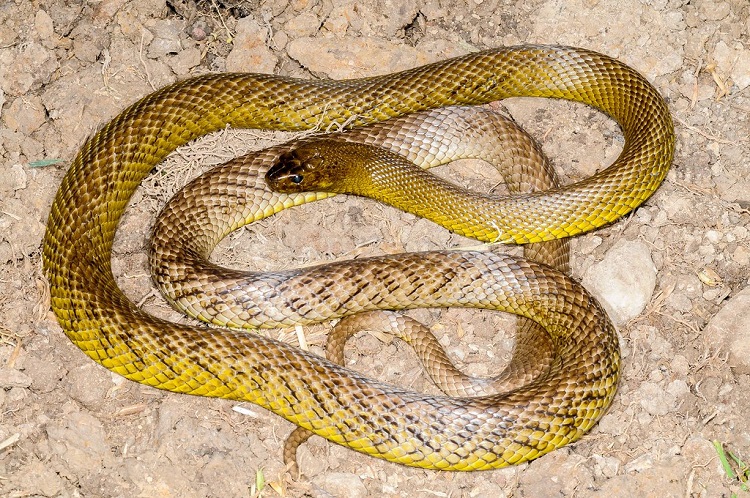
Since the Inland Taipan isn’t commonly found, anyone who is bitten isn’t going to make it to the nearest anti-venom that only treats bites from a Taipan relative living on the coast. Even experienced handlers are afraid to touch these most dangerous animals.
Among 375 Shark Species, 12 Are Considered Dangerous (Farandwide)
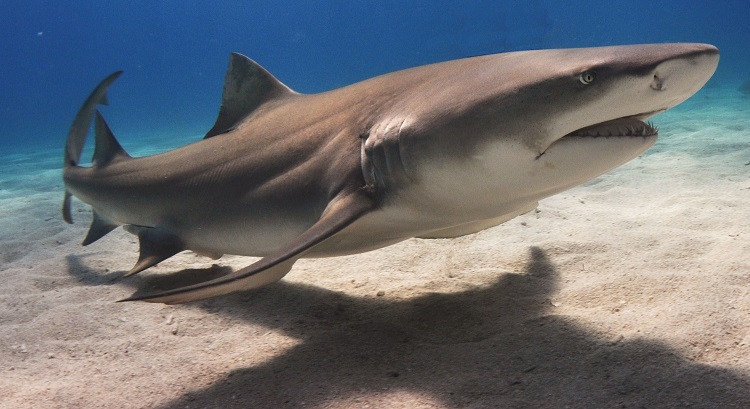
Hollywood has done a bang-up job of destroying the shark’s reputation as man-eaters. Great White sharks are formidable creatures, as are the Tiger and Bull sharks, but many divers and shark advocates are fighting to change their lousy rep and educate people about shark habits and how to identify them.
Shark attacks are still rare, despite what the media has us believing.
Cape Buffalo Are Responsible for 200 Deaths per Year (Safaris Africana)

Known locally as widowmakers or black death, Cape Buffalo are fantastic beasts weighing up to 2,200 lbs. Cape Buffalo travel in massive herds and will protect their young and even go after apex predators.
What’s truly unique about these buffalo is that they stalk humans and kill them. That makes them top contenders for the deadliest animal title.
Cape Buffalo was once on the trophy hunter list; perhaps 200 yearly deaths is payback.
Elephants Cause Approximately 600 Human Deaths Each Year (BBC)

These iconic land mammals can weigh 15,000 lbs and behave unpredictably, especially during mating season when males have high testosterone levels. Elephants trample and crush their victims, and interestingly enough, in high poaching areas, elephants feel the stress and behave more aggressively.
FAQ’s
Humans sometimes complain because they believe they have it so tough. Try being an animal and see how challenging even the most essential life-sustaining efforts are. Some animals, however, are equipped with bizarre defense mechanisms or brute strength, and that makes them the most dangerous creatures.
What Are the Meanest Animals in the World?
Still going with humans on that one. The Cape Buffalo ranks up there since it backtracks and hunts people and other animals by surprising them–that takes cunning. According to research, the hippo, the Nile crocodile, and the lion round out the list of the deadliest animals.
What Is the Deadliest Animal on Earth?
The mosquito is a prolific killer and kills a million people annually. While this insect is part of the circle of life, it’s just a nasty, blood-sucking pest. It’s hard to find any compassion for these insects and why they’re the deadliest animals.
What Is the Most Ferocious Animal in the World?
Going by the meaning of the word ferocious, the winners are the Saw-Scaled Viper and Inland Taipan. However, there’s room for other contenders on the unofficial list of most dangerous animals, like the Asian Giant Hornet, Leopard Seal, and Orcas.
Other people might add the Grizzly Bear, Lion, Tiger, Shark, Cougar, and any deadly creatures on the list above, including our beloved canine friend.
However, animals don’t devise devious plans to stalk, kill, and maim. They behave how nature designed them to. Perhaps the same can be said for humans: we are the most dangerous animals because of genetic engineering.
Conclusion
The world’s deadliest animals don’t always have an aggressive nature, and not all wild encounters lead to deadly consequences. Animal advocates have a tremendous responsibility to defend these headline-grabbing statistics and make sense of them.
Word population figures are never stagnant, and right now, we’re sitting at 8,037,063,822 people on planet Earth. Take the number of deaths attributed to dangerous animals on this list, and the percentage works out to 0.020294.
Although these deaths are always tragic, humans kill and consume 9 billion chickens in the USA annually. Not to mention that we slice the fins from these dangerous animals called sharks by the millions for soup.
Whenever people play with unknown wildlife, there is a chance they contract diseases or the encounter ends in death for both parties. Some of the most dangerous animals are also on the list of endangered animals.
Just one more thing to keep things in perspective: Every year, 1.3 million people die in car accidents, and another 50 million suffer injuries. Yet we don’t have headlines that suggest Volkswagon Mini kills 200 people or Toyota Yaris maims 2,000 pedestrians. We don’t even give getting behind the wheel a second thought!


